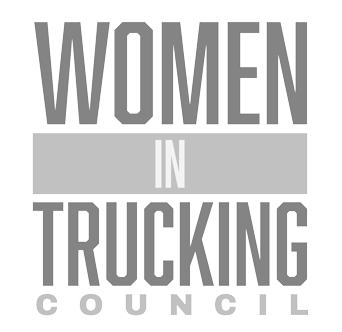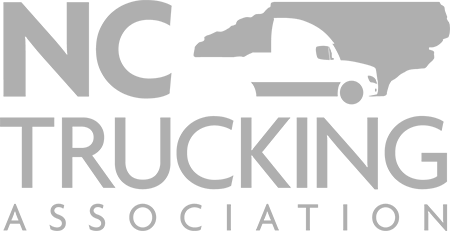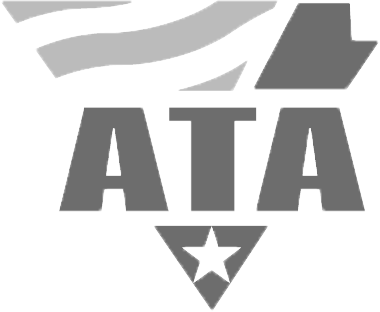Understanding the Security Challenges of Mexico Nearshoring
The logistics landscape connecting the United States and Mexico is undergoing a significant transformation, driven largely by the rise of nearshoring. As companies relocate manufacturing and assembly operations closer to North American consumers, the flow of goods across the border escalates. This shift, while offering compelling advantages like reduced transit times and lower labor costs, also presents unique and complex security challenges that cannot be overlooked. Ensuring secure Mexico cross-border nearshoring trucking is paramount for maintaining supply chain integrity and protecting valuable cargo.
Nearshoring to Mexico involves navigating a complex environment that differs significantly from domestic transportation within the U.S. or even traditional, long-haul international shipping. The sheer volume of freight crossing busy border points, coupled with varying levels of security infrastructure and differing legal frameworks, creates potential vulnerabilities. Understanding these foundational security challenges is the first step in building a robust and resilient nearshoring supply chain. It requires a nuanced perspective that goes beyond simple transit times and costs, delving into the specifics of risk assessment and mitigation in the Mexican context.
One primary challenge is the varying security climate across different regions of Mexico. While major industrial corridors and border cities have invested heavily in security measures, other areas may present higher risks. Shippers and carriers must have a detailed understanding of these regional variations and tailor their security protocols accordingly. This isn’t a one-size-fits-all situation; routes, destinations, and even times of day can impact the level of risk. Furthermore, the coordination required between U.S.-based operations, Mexican carriers, customs brokers, and security personnel adds layers of complexity that demand careful management and clear communication channels.
The increased movement of high-value goods, often characteristic of nearshoring operations in sectors like automotive, electronics, and manufacturing, naturally attracts unwanted attention. This necessitates a higher level of vigilance and more sophisticated security measures than might be required for lower-value commodities. Companies engaging in nearshoring must factor these enhanced security requirements into their planning and budgeting from the outset. Ignoring or underestimating the security challenges can lead to significant financial losses, supply chain disruptions, and damage to a company’s reputation.
Beyond the physical security of cargo, there are also risks associated with regulatory compliance and documentation. Errors or discrepancies can lead to delays at the border, leaving shipments vulnerable. Understanding and adhering to both U.S. and Mexican customs regulations, as well as specific transportation security mandates, is crucial. This requires expertise in cross-border procedures and potentially leveraging partners with deep knowledge of the Laredo gateway and other key entry points. The complexity of these processes can be a hurdle, but navigating them correctly is fundamental to a secure and efficient flow of goods.
Moreover, the human element plays a critical role. From drivers and logistics managers to warehouse staff and security personnel, every individual involved in the cross-border process must be properly vetted, trained, and aware of security protocols. Insider threats, though rare, are a potential vulnerability that must be addressed through rigorous hiring practices and ongoing security awareness programs. Building a culture of security within all participating organizations is just as important as implementing technological solutions or physical safeguards.
The integration of technology, while a powerful tool for enhancing security, also introduces its own set of challenges, such as cybersecurity risks related to tracking systems and communication networks. Ensuring these systems are secure and resilient against cyber threats is an increasingly important aspect of overall supply chain security. Companies must consider the digital footprint of their logistics operations and protect sensitive data from unauthorized access or manipulation. This multi-faceted approach to security, encompassing physical, procedural, and digital elements, is essential for successfully implementing secure Mexico cross-border nearshoring trucking operations.
Addressing these challenges effectively requires a proactive and comprehensive strategy. It involves not only understanding the potential threats but also implementing layered security measures designed to deter, detect, and respond to incidents. This includes everything from secure parking locations and vetted personnel to advanced tracking technology and strong relationships with law enforcement agencies on both sides of the border. The goal is to create a resilient supply chain that can withstand potential disruptions and ensure the safe and timely delivery of goods.
Identifying Key Risks in Cross-Border Trucking to Mexico
Operating cross-border trucking routes into Mexico inherently involves navigating a specific set of risks that demand careful identification and mitigation. While domestic trucking has its own challenges, the international aspect, particularly with differing legal systems, infrastructure, and security environments, amplifies potential issues. Understanding these key risks is fundamental to developing strategies for secure Mexico cross-border nearshoring trucking.
Perhaps the most widely publicized risk is cargo theft. This can range from opportunistic theft of unattended trailers to sophisticated, organized attacks targeting specific, high-value shipments. Certain routes and regions in Mexico are known to have higher incidences of cargo theft, making route planning and real-time monitoring critical. The types of goods being transported also significantly impact the level of risk; electronics, pharmaceuticals, and consumer goods are frequently targeted.
Border delays constitute another significant risk, albeit different from theft. Congestion at major border crossings like Laredo, combined with stringent customs inspections and potential regulatory hurdles, can lead to extended dwell times. While not a direct security threat in the sense of cargo loss, prolonged delays increase the vulnerability of shipments, expose drivers to potential risks while waiting, and disrupt carefully planned schedules. Efficient customs brokerage and pre-clearance programs can help mitigate this, but delays remain a persistent challenge that requires flexibility and contingency planning.
Infrastructure quality varies throughout Mexico. While major highways connecting industrial centers are often well-maintained, secondary roads can be less reliable. This can lead to equipment damage, delays, and increased risk, particularly in more remote areas. Route assessment and selection, considering road conditions and potential hazards, are vital components of risk management. Relying on carriers with well-maintained fleets, like those equipped with the latest-generation tractors and trailers, can also help mitigate risks associated with infrastructure quality.
Regulatory and compliance risks are also significant. The complex interplay of U.S. and Mexican customs laws, transportation regulations, and security mandates requires careful attention. Non-compliance, whether accidental or intentional, can result in fines, delays, seizure of goods, or even denial of entry. This underscores the importance of working with knowledgeable partners, including carriers and customs brokers, who possess deep expertise in cross-border procedures. Staying informed about evolving regulations, such as changes to FMCSA requirements or Mexican customs procedures, is also crucial.
Driver safety and security are paramount concerns. Truck drivers operating cross-border routes face unique risks, including potential exposure to dangerous situations, fatigue from long hours and border waits, and the stress of navigating unfamiliar territories. Ensuring drivers are properly trained in security protocols, equipped with communication tools, and have access to secure parking facilities is essential. The well-being of drivers is intrinsically linked to the security of the cargo they are transporting. Building a culture that prioritizes driver safety, as highlighted in discussions about understanding the human aspect of truck driver recruiting, is key.
Political and social instability in certain regions can also pose risks to trucking operations. While broad generalizations should be avoided, local conditions can sometimes impact routes and schedules. Staying informed about current events and maintaining situational awareness is important for operational planning. Diversifying routes where possible and having contingency plans in place can help manage this risk.
Finally, internal risks within logistics operations, such as errors in documentation, lack of communication, or inadequate vetting of personnel, can inadvertently create vulnerabilities. Addressing these risks requires robust internal controls, thorough training programs, and a commitment to continuous process improvement. Identifying these key risks is the essential precursor to developing and implementing effective strategies for secure Mexico cross-border nearshoring trucking.
A comprehensive risk assessment process should be ongoing, not a one-time exercise. The security landscape is dynamic, and new threats can emerge. By systematically identifying and analyzing these risks, companies can prioritize mitigation efforts and allocate resources effectively to protect their supply chains. This forms the bedrock upon which all subsequent security strategies are built.
Essential Strategies for Secure Mexico Cross-Border Nearshoring Trucking
With a clear understanding of the challenges and risks inherent in Mexico cross-border trucking for nearshoring operations, the next crucial step is to implement effective strategies to enhance security. These strategies are not standalone measures but should form a layered defense approach, combining robust planning, careful partner selection, and proactive operational protocols. Implementing these essential strategies is key to achieving secure Mexico cross-border nearshoring trucking.
One of the most fundamental strategies is meticulous route planning and risk assessment for every shipment. This involves analyzing potential routes based on current security intelligence, historical incident data, and destination specifics. Avoiding known high-risk areas, especially during certain times of day or night, is a basic but vital step. Utilizing technology to monitor routes and receive real-time updates on conditions is also essential.
Selecting the right cross-border carrier is paramount. Not all trucking companies operating in Mexico possess the same level of security infrastructure, experience, or relationships with local authorities. Partnering with carriers who specialize in cross-border logistics, have a proven track record of security, and invest in technology is critical. This includes vetting their drivers, equipment maintenance standards, and communication protocols. An asset-based carrier model, for instance, can offer greater control over drivers and equipment, potentially enhancing security compared to relying solely on brokered loads.
Implementing robust security protocols for cargo handling is non-negotiable. This includes secure loading and unloading procedures, using high-security seals on trailers, and minimizing dwell times in unsecured locations. Cargo should only be transferred or stored in vetted, secure facilities. Procedures for handling unexpected stops or route deviations must be clearly defined and communicated to drivers.
Enhanced communication and visibility are cornerstones of secure operations. Drivers should have reliable communication devices and check in regularly. Real-time tracking of shipments allows logistics managers to monitor progress and respond quickly to any deviations or alerts. Establishing clear communication channels with customs brokers and security personnel on both sides of the border ensures seamless information flow and faster response times in case of an incident.
Collaboration with industry associations and government agencies is another powerful strategy. Participating in programs like the Customs-Trade Partnership Against Terrorism (C-TPAT) in the U.S. and similar authorized economic operator (AEO) programs in Mexico demonstrates a commitment to supply chain security and can facilitate smoother border crossings. Sharing intelligence and best practices with other shippers and carriers operating in the region can also help collectively raise the security bar.
Investing in driver training focused specifically on cross-border security risks is vital. Drivers are the first line of defense and must be equipped with the knowledge and skills to identify potential threats, follow security protocols, and react appropriately in emergency situations. Training should cover topics such as recognizing suspicious activity, secure communication procedures, and what to do in case of attempted theft or other incidents. This ties into the broader theme of valuing and supporting drivers, which is crucial for retention and performance, as discussed in articles like Volvo Magazine: APEX Transit Credits Growth to a Focus on Drivers and a Commitment to Safety.
Diversification of routes and border crossings, where feasible, can help reduce reliance on potentially congested or higher-risk points. While Laredo is a major and often necessary gateway, understanding the capabilities and security profiles of other crossings can provide flexibility and alternative options when needed. This requires comprehensive knowledge of the border infrastructure and logistics networks.
Finally, robust insurance coverage is a critical, though often overlooked, security strategy. While prevention is the primary goal, having adequate cargo insurance and liability coverage specific to cross-border operations provides a financial safety net in the event of loss or damage. Reviewing insurance policies to ensure they cover the specific risks associated with trucking in Mexico is essential.
Implementing these strategies requires commitment from all stakeholders in the nearshoring supply chain, from the shipper and consignee to the carrier and customs broker. By taking a proactive, multi-layered approach to security, companies can significantly mitigate the risks and ensure secure Mexico cross-border nearshoring trucking, allowing them to fully realize the benefits of relocating operations closer to home markets.
Leveraging Technology to Enhance Supply Chain Security
In the modern logistics environment, technology is no longer a luxury but a necessity for enhancing supply chain security, especially in complex cross-border operations like those involved in Mexico nearshoring. The intelligent application of various technological tools can provide unprecedented visibility, deter criminals, and enable rapid response to security incidents. Leveraging technology effectively is a cornerstone of achieving secure Mexico cross-border nearshoring trucking.
One of the most fundamental technological tools is real-time GPS tracking. Advanced tracking systems provide precise location data for trucks and trailers, allowing logistics managers to monitor shipments constantly. This is invaluable for verifying routes, detecting unauthorized stops or deviations, and estimating arrival times accurately. Systems that offer geo-fencing capabilities can trigger alerts if a vehicle enters or leaves a predefined area, adding another layer of security. API-ready GPS links that integrate into customer ERPs offer unparalleled visibility and control.
Telematics systems, which combine GPS tracking with data from the vehicle’s onboard computers, provide even richer insights. These systems can monitor driver behavior, vehicle speed, harsh braking, and engine diagnostics. While primarily used for fleet management and safety, telematics data can also contribute to security by identifying unusual driving patterns that might indicate a problem. Integrated systems like Samsara ELD and LoadStop TMS, when combined with open-API GPS, offer a comprehensive view of fleet activity and location.
High-security seals and smart locks equipped with tracking capabilities or tamper-evident technology are increasingly being used to protect trailer contents. These seals can provide notification if they are broken or tampered with, alerting authorities and logistics teams immediately. The use of technology in seals adds a critical layer of physical security that is electronically monitored.
Communication technology plays a vital role. Reliable satellite communication systems or cellular networks with extensive coverage in Mexico ensure that drivers can stay in contact with dispatch centers and security personnel, even in remote areas. Emergency communication protocols and panic buttons linked to monitoring centers provide drivers with a means to quickly alert authorities in distress situations.
Data analytics is becoming increasingly important for proactive security. By analyzing historical shipment data, incident reports, and external threat intelligence, companies can identify patterns, predict potential risks on specific routes or at certain times, and optimize their security strategies accordingly. Machine learning algorithms can potentially detect anomalies in shipping data that might indicate fraudulent activity or planned theft.
Video surveillance technology, including inward and outward-facing cameras in truck cabs, serves multiple purposes. It can deter theft attempts, provide evidence in case of an incident, and help monitor driver adherence to security protocols. Modern camera systems often integrate with telematics platforms, providing a comprehensive view of the vehicle’s environment and the driver’s actions.
Leveraging digital platforms for documentation and communication with customs brokers can also enhance security by reducing the risk of errors associated with paper-based processes and speeding up border clearance. Electronic logging devices (ELDs), while primarily for hours of service compliance, also provide verifiable route and time data that can be useful in security investigations.
Implementing a layered technology strategy, where different systems work together, provides the most robust defense. For instance, combining real-time GPS tracking with telematics data, smart seals, and constant communication creates a comprehensive monitoring and response system. The key is not just adopting technology but integrating it effectively into operational workflows and ensuring staff are fully trained on its use.
Choosing logistics partners who are investing in and effectively utilizing these technologies is a crucial part of leveraging technology for security. A carrier with outdated tracking systems or unreliable communication tools will inherently present a higher risk. Prioritizing partners with advanced tech stacks demonstrates a commitment to modern, secure operations. This is essential for any company seeking secure Mexico cross-border nearshoring trucking.
Choosing and Vetting Secure Trucking and Logistics Partners
The success of any secure Mexico cross-border nearshoring trucking operation heavily relies on the quality and trustworthiness of the partners involved. Selecting the right trucking company, customs broker, and any other logistics providers is not a decision to be taken lightly. Thorough vetting is crucial to ensure these partners meet rigorous security standards and align with your company’s risk tolerance. This process is fundamental to building a resilient and secure supply chain.
Begin by assessing potential partners’ security track records. Ask for references, review their safety scores (like FMCSA SAFER data), and inquire about their history with cargo theft or security incidents. A partner with a demonstrably strong safety and security record is a prerequisite. Don’t hesitate to ask detailed questions about any past incidents and how they were handled.
Investigate their specific experience with Mexico cross-border operations. Look for partners who have established expertise, particularly at key border gateways like Laredo. Experience navigating Mexican customs, understanding regional nuances, and having relationships with local service providers can be invaluable. A partner with deep roots in the cross-border market is often better equipped to handle potential issues.
Evaluate their security protocols and procedures. This goes beyond just technology. Do they have documented security plans? What are their procedures for driver vetting and training? How do they handle route planning and risk assessment? What are their emergency response protocols in case of an incident? A reputable partner will have clear, well-defined procedures in place and be transparent about them.
Assess their investment in technology for security and visibility. As discussed previously, technology like real-time GPS tracking, telematics, and secure communication systems are essential. Do they have the technology stack necessary to provide the level of visibility and control you require? Can their systems integrate with yours to ensure seamless data flow?
Inquire about their relationships with relevant security and governmental organizations. Are they certified members of programs like C-TPAT? Do they collaborate with U.S. and Mexican law enforcement or industry security groups? Participation in such initiatives often indicates a higher commitment to security and can facilitate smoother operations.
Understand their asset profile. Are they primarily an asset-based carrier, a brokerage, or a hybrid model? An asset-based carrier often has greater direct control over their drivers, equipment, and security protocols, which can be a significant advantage for high-security shipments. A hybrid model might offer flexibility but requires careful vetting of the third-party carriers they use. APEX Transit, for example, operates on an asset-based model with their own fleet and drivers, which provides inherent control and security advantages.
Review their insurance coverage. Ensure they have adequate cargo insurance, liability insurance, and any other relevant coverage specific to cross-border operations in Mexico. Request certificates of insurance and verify coverage amounts and terms.
Consider their financial stability. A financially stable partner is more likely to maintain their equipment, invest in technology, and retain experienced personnel, all of which contribute to security and reliability. Conduct due diligence on their business history and financial health.
Finally, engage in open and consistent communication. A good partner will be proactive in communicating potential risks, sharing security updates, and collaborating on solutions. Establishing a strong, collaborative relationship based on trust and transparency is key to long-term supply chain security. This consultative, partnership-focused approach is a differentiator for companies aiming for secure Mexico cross-border nearshoring trucking.
By conducting this comprehensive vetting process, companies can significantly reduce their exposure to risk and build a network of reliable, secure partners essential for successful nearshoring operations.
Best Practices for Operational Security and Risk Mitigation
Beyond strategic planning and partner selection, implementing rigorous operational security best practices on a day-to-day basis is critical for ensuring secure Mexico cross-border nearshoring trucking. These practices involve establishing clear procedures, training personnel, leveraging technology effectively, and fostering a culture of security throughout the supply chain. Consistent application of these best practices helps mitigate risks and build resilience.
Detailed driver briefings and trip planning are essential before every cross-border journey. Drivers should receive up-to-date information on the planned route, potential hazards, secure parking locations, communication protocols, and emergency procedures. They should know who to contact in case of any issues and have access to relevant contact numbers and emergency services information for Mexico.
Maintaining constant communication with drivers throughout the trip is paramount. Utilizing real-time tracking and check-in procedures ensures visibility and allows for prompt response if a driver encounters difficulties or deviates from the planned route. Two-way communication devices are necessary for this, and drivers should be trained on their proper and secure use.
Secure parking is a critical concern, particularly during mandatory rest stops or while waiting at the border. Drivers should be instructed to use only approved, secure truck stops or facilities with adequate lighting, surveillance, and security personnel. Avoiding parking in unmonitored or isolated areas significantly reduces the risk of cargo theft or driver harm.
Implementing strict protocols for trailer sealing and inspection is vital. High-security seals should be applied immediately after loading and inspected upon arrival. Drivers should also inspect the trailer and seal before departing any stop to ensure it hasn’t been tampered with. Using numbered seals and maintaining a log of seal numbers adds an extra layer of accountability.
Minimizing dwell time at the border is crucial. Efficient communication with customs brokers and having all necessary documentation prepared in advance can help expedite the clearance process. While delays are sometimes unavoidable, actively working to minimize them reduces the time shipments are vulnerable in congested areas.
Establishing clear emergency response plans is a non-negotiable best practice. What steps should a driver take in case of an attempted theft, accident, or breakdown? How is the logistics team notified, and what is the protocol for contacting local authorities in Mexico? These plans must be documented, trained upon, and practiced periodically to ensure everyone knows their role.
Ongoing security training for all personnel involved in cross-border logistics, including drivers, dispatchers, and warehouse staff, is vital. Training should cover recognizing suspicious activity, understanding current threat landscapes, proper use of security technology, and adherence to all operational protocols. Refreshing this training regularly ensures that security awareness remains high.
Maintaining equipment to the highest standards also contributes to security. Well-maintained trucks and trailers are less likely to break down, reducing the chances of a vehicle being stranded in an unsafe location. Regular inspections and proactive maintenance, such as performed in a company’s on-site shop, ensure equipment reliability.
Utilizing data from tracking systems and telematics to continuously evaluate and improve security procedures is an important best practice. Analyzing data on routes, dwell times, and incidents can reveal vulnerabilities and inform adjustments to operational protocols. This data-driven approach allows for continuous optimization of security measures.
Building strong relationships with trusted partners, including reputable Mexican carriers (if applicable), customs brokers, and local security contacts, facilitates smoother operations and quicker assistance when needed. Collaboration and mutual trust are essential for navigating the complexities of cross-border logistics securely.
Finally, maintaining appropriate insurance coverage, as mentioned earlier, is the ultimate risk mitigation tool. While these operational practices aim to prevent incidents, having comprehensive insurance provides financial protection in the event of unforeseen circumstances.
Implementing these best practices requires discipline and a commitment to security at every level of the organization and with all partners. By focusing on these operational details, companies can significantly strengthen their supply chains and ensure secure Mexico cross-border nearshoring trucking, enabling them to fully capitalize on the strategic advantages of manufacturing closer to home.
The increasing trend of nearshoring to Mexico presents exciting opportunities, but these must be approached with a clear understanding of the associated security complexities. By implementing robust strategies for secure Mexico cross-border nearshoring trucking, companies can protect their assets, ensure timely delivery, and build resilient supply chains that support long-term growth and success in the North American market. Prioritizing security is not just about mitigating risk; it’s about enabling opportunity.
Have questions? Contact us here.














